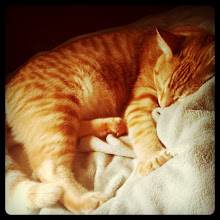One of my pet peeves, and one that I know is shared by many, is bad grammar. It seems that, nowadays, wherever you look, be it general chat, forums, what have you, people are mangling the English language.
Grammar is a subject usually taught at the early elementary school level. So it would be a safe assumption that a given WoW player (even the 12-year-olds) should have a grasp of basic grammatical structure. Unfortunately, that does not appear to be the case, and so I endeavour to outline a few basic rules of English.
The Basics
The core unit of the English language is the sentence. The most basic sentence structure is the simple sentence. A simple sentence consists of a subject and a verb. There are more complex sentence types, but let's take it in baby steps.
A subject is the person, place or thing that the sentence is about. The subject is a noun or a pronoun. There are three types of pronouns:
1st person: I, me, we (plural)
2nd person: you
3rd person: she, he, they (plural)
Also, there are proper nouns, which are names (ex. Claire, Joseph, Toronto).
A verb is an action word. Verbs describe what the subject is doing. Verbs have tenses, which describe when the action is happening:
Present: walking (I am walking)
Past: walked (I walked)
If you want to express a verb in the future tense, it generally requires a modifier as such:
Future: will walk (I will walk).
A Few Simple Rules
Believe it or not, there is a big difference between "its" and "it's"; between "your" and "you're", and so on. "Its" and "your" are possessive. For example, if I were to say "your car", I am saying that the car belongs to you. However, "you're car" makes no sense. Likewise, "its car" means that the car belongs to "it" (where it is an ambiguous third person pronoun).
Apostrophes have three uses:
1. to form possesive of nouns
2. to show the omission of characters
3. to indicate certain plurals
Now, I know I just said that an apostrophe-s is not possessive, but the structure does indicate possessiveness in some cases. For example, it is "the boy's hat", meaning that the hat belongs to the boy.
If an apostrophe is used in a word such as "don't" or "you're", it is showing the omission of letters. If those words are expanded and the apostrophe is removed, you get "do not" and "you are".
Now, using apostrophes to indicate plurals only happens on words ending in "s", because you can't add another s to the end of the word to indicate plural.
When you have a sentence like "Mary and I went to the theatre", there are a few rules that must be followed. First, the third person pronoun (Mary, in this example) must always go first. If you have more than one third person pronoun (if your sentence was "Mary, Jason and I" or "Susan and James"), it doesn't matter who goes first (pick your favourite). Second, you must use the correct first person pronoun. I usually double-check my structure by removing the other subject as such:
"Mary and me went to the theare."
"Me went to the theatre." This sentence is incorrect; the wrong first person pronoun was used.
"Mary and I went to the theatre."
"I went to the theatre." This senctence makes sense on its own, therefore "I" is the correct pronoun.
Now, there is so much more grammar to be learned, but for now I leave you with these basics. If you keep these rules in mind, you will be able to communicate in an intelligent fashion in trade chat. I thank you for respecting the English language. Next week: French!
/afk
Subscribe to:
Post Comments (Atom)

I love you.
ReplyDeleteOh.. See.. Dee..
ReplyDeleteIn all seriousness, pet peeve of mine too - way to go!